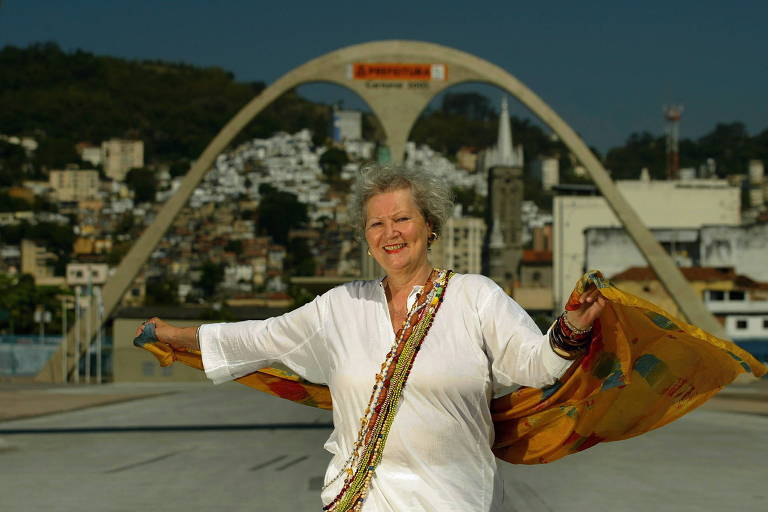Maria Augusta, Carnival icon and pioneer among carnival designers, dies at 83

Carnival designer and former parade commentator Maria Augusta Rodrigues died this Friday (11), aged 83, in Rio de Janeiro . She had been hospitalized since June at Hospital São Lucas, in Copacabana, in the south of the city, for treatment against bladder cancer, and died as a result of multiple organ failure.
One of the most respected women in the samba world, Maria Augusta pioneered the creation of themes and aesthetics for samba school parades. Over the course of more than five decades, she left her mark on samba schools such as Salgueiro , União da Ilha, Tradição, Paraíso do Tuiuti, Beija-Flor, and Império Serrano, where she was also the godmother of the percussion section.

A native of São João da Barra, in northern Rio de Janeiro, she first encountered Rio's Carnival in the late 1960s, at Império da Tijuca. In 1969, she debuted at Salgueiro as an assistant to Fernando Pamplona and Arlindo Rodrigues in the theme "Bahia de Todos os Deuses"—a parade that secured the school's title. Alongside names like Joãosinho Trinta and Rosa Magalhães, she was a leading figure in the movement known as the Salgueiro Revolution, which transformed the aesthetic language of samba schools.
He signed or collaborated with historical parades, such as "Festa para um Rei Negro" (1971), also by Salgueiro, and "Domingo" (1977) and "O Amanhã" (1978), by União da Ilha do Governador — considered landmarks of lightness and inventiveness in the plots.
Her last job as a carnival designer was at Beija-Flor in 1993, when she replaced Joãosinho Trinta in the theme song "Uni-duni-tê, Beija-Flor chose: it's you." Outside of the parade, she worked as a parade commentator for networks such as Globo, Manchete, Band and CNT, in addition to being a member of the jury for the Estandarte de Ouro award, from the newspaper O Globo.
A retired professor from the UFRJ School of Fine Arts, Maria Augusta was also a role model for new generations of Carnival artists and researchers. A Candomblé practitioner, she became a leading figure both within and outside Brazil, welcoming Carnival researchers and scholars and facilitating cultural exchanges over the decades.
At the 2025 Carnival, she was honored by the Aprendizes do Salgueiro children's school, with whom she paraded with emotion. In 2004, she had already been part of the Arranco school's theme song, in the former Group B.
Maria Augusta's death caused a stir in the samba world. In a statement, Salgueiro stated that his "heart is in mourning, but full of gratitude."
"Maria Augusta wasn't just a brilliant artist. She was a revolution in her own right. She stood alongside names like Fernando Pamplona, Arlindo Rodrigues, Joãosinho Trinta, and Rosa Magalhães during the most audacious and creative moment in our history," the school said. "Wherever there was samba, there was Maria Augusta, and where she was, there was respect, truth, and greatness."
The Imperatriz Leopoldinense, the Independent Youth of Padre Miguel, the Unidos da Tijuca, the Unidos de Padre Miguel and other associations also paid tribute.
Beija-Flor de Nilópolis defined Maria Augusta as "one of the great ladies of the festivities" and "an essential name in the construction of the history of Brazilian Carnival".
Império Serrano remembered the godmother of its Samba Symphony as a "symbol of affection and respect in front of the percussionists".
"His legacy will live on in the memories and hearts of each of us," the school said.
uol





